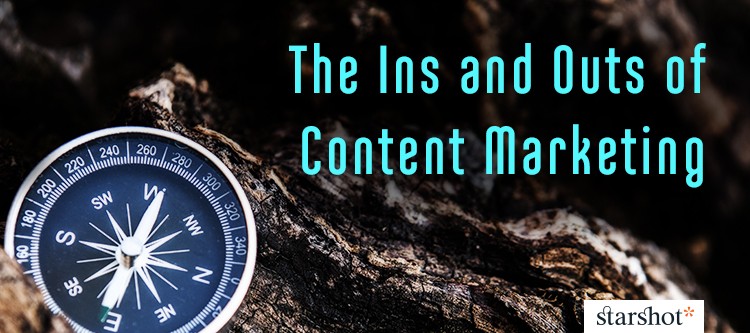Sometimes the loudest voice in the room gets the most attention, but doesn’t make the best impression. Outbound marketing tactics, like radio or television ads, telemarketing, cold calling, direct mail and traditional advertising, are designed to cut through the noise and force an audience to pay attention. Inbound marketing is a bit like the quiet, witty intellect in the room, attracting people by answering questions the right way when asked. The tactics Inbound marketers rely on include blogging, short and long-form content, SEO, landing pages, email marketing, marketing automation, and lead nurturing.
Those are the “ins” and “outs” of marketing – or the “pull” and “push” approaches.
So what makes Inbound marketing such an effective funnel-filler? Further, how do marketers use Inbound strategies to, as Mr. Carnegie would say, “win friends and influence people”? First, you need to acknowledge that content marketing is the cornerstone of Inbound Methodology. Next, you’ll need to follow the four stages of the Inbound Methodology: attract, convert, close and delight.
Attract
Do you believe in love at first sight? With Inbound-sound content, there are ways to make even a complete stranger pursue the next steps in your relationship. In this first stage, marketers create an environment that warms the audience, at times, without them being aware. For example, website optimization drives an online audience to your site believing it was their “choice” to do so. In reality, you’ve created content – like blogs, articles, landing pages, etc. – that are so rich with SEO best practices, that it’s essentially acting as an usher with a flashlight in a crowded theatre. Once people choose to land on your content, and then find exactly what they were looking for without a sales pitch, they’re far more willing to taking the relationship to the next level.
Convert
Once they’re interested, you need to get their number. In the convert stage, you’re setting up content that will capture critical contact information – name, email, role, primary interest, etc. Typically, this is when you rely on the basic system of reciprocity: an exchange of perceivably equal value. In the Inbound world, currency is high value content, or offers like ebooks, whitepapers, studies or even tip sheets. In return, prospects are willing to provide their information as a form of payment. Make it super simple for your audience to give you “payment” – set up clear call-to-actions, a single message landing page, and basic forms to capture their data.
Close
ABC: Always Be Closing. Send your best content in to close the deal. This is most successful if you have a CRM in place to capture data, and feed relevant content and follow ups to warm leads. It’s all about timing, and that’s why drip campaigns, email marketing and timely content offers are so important in this stage. You know a little something about your leads now: who they are, what they’re interested in, location, role, etc. The close stage is where you turn a phone number into a brand new relationship.
Delight
 Once you close the deal, you can’t just walk away. The Inbound Methodology is cyclical and holistic. In the delight stage, you want to turn new customers into emphatic loyalists of your brand. There’s no better marketing than a happy customer because news travels fast and far. Use content like surveys and social monitoring to show your customers that you care about their happiness. Feed current and past customers different, or smart, content tailored to their relationship with you. This kind of attention to detail in your content development and distribution goes a long way.
Once you close the deal, you can’t just walk away. The Inbound Methodology is cyclical and holistic. In the delight stage, you want to turn new customers into emphatic loyalists of your brand. There’s no better marketing than a happy customer because news travels fast and far. Use content like surveys and social monitoring to show your customers that you care about their happiness. Feed current and past customers different, or smart, content tailored to their relationship with you. This kind of attention to detail in your content development and distribution goes a long way.
Put these practices in motion. You’ll start to see how powerful the “strong silent” Inbound Methodology can be in a noisy online marketplace.
Our experienced marketers know the ins and outs of marketing. Ask us how to Inbound.
